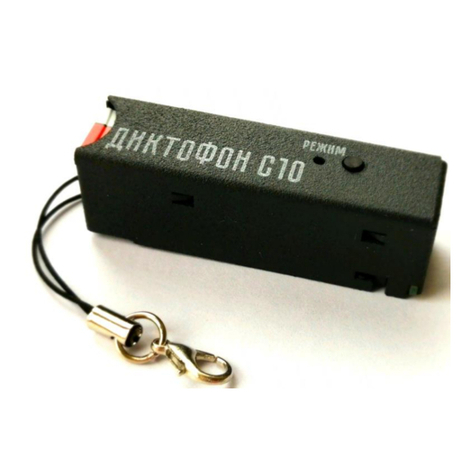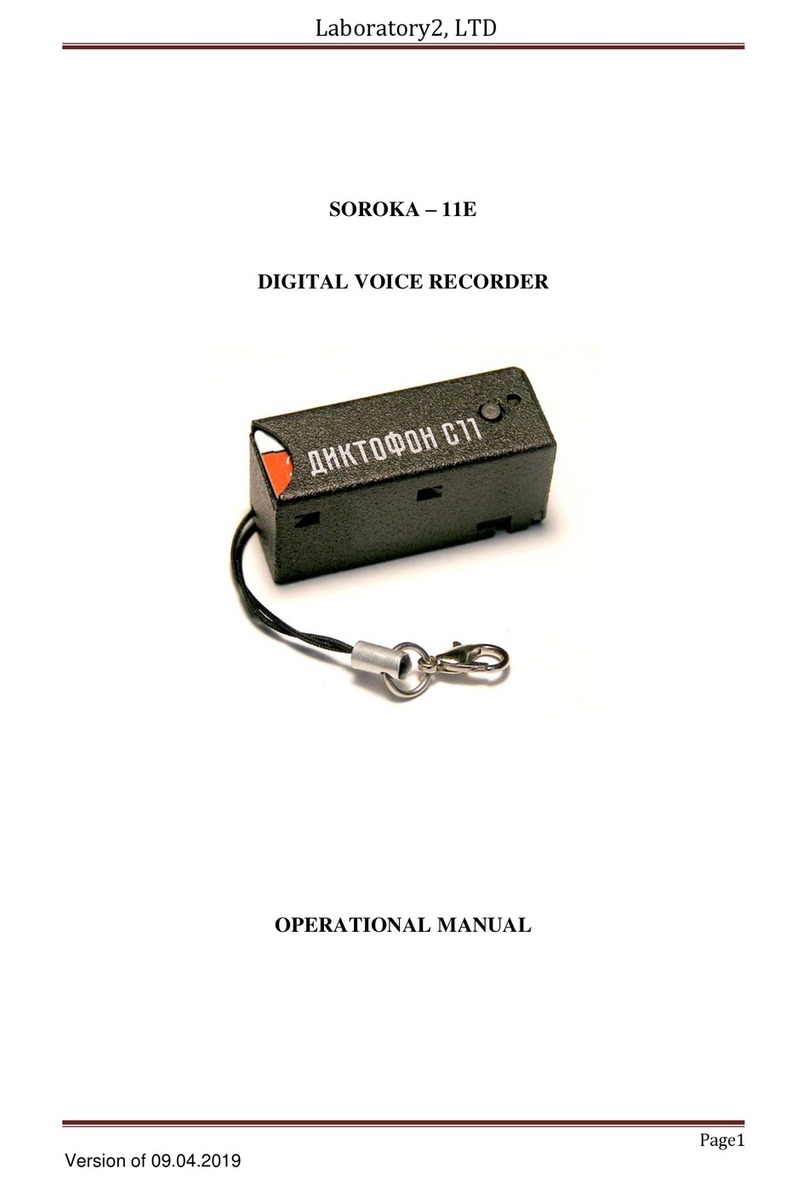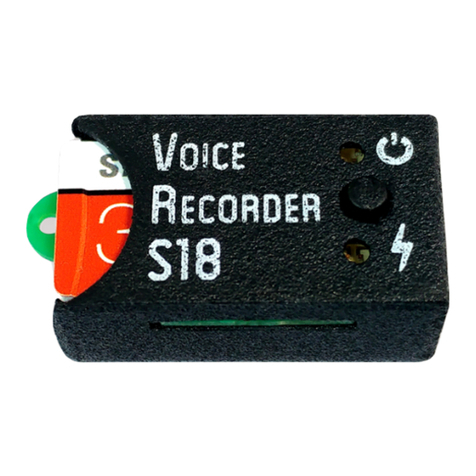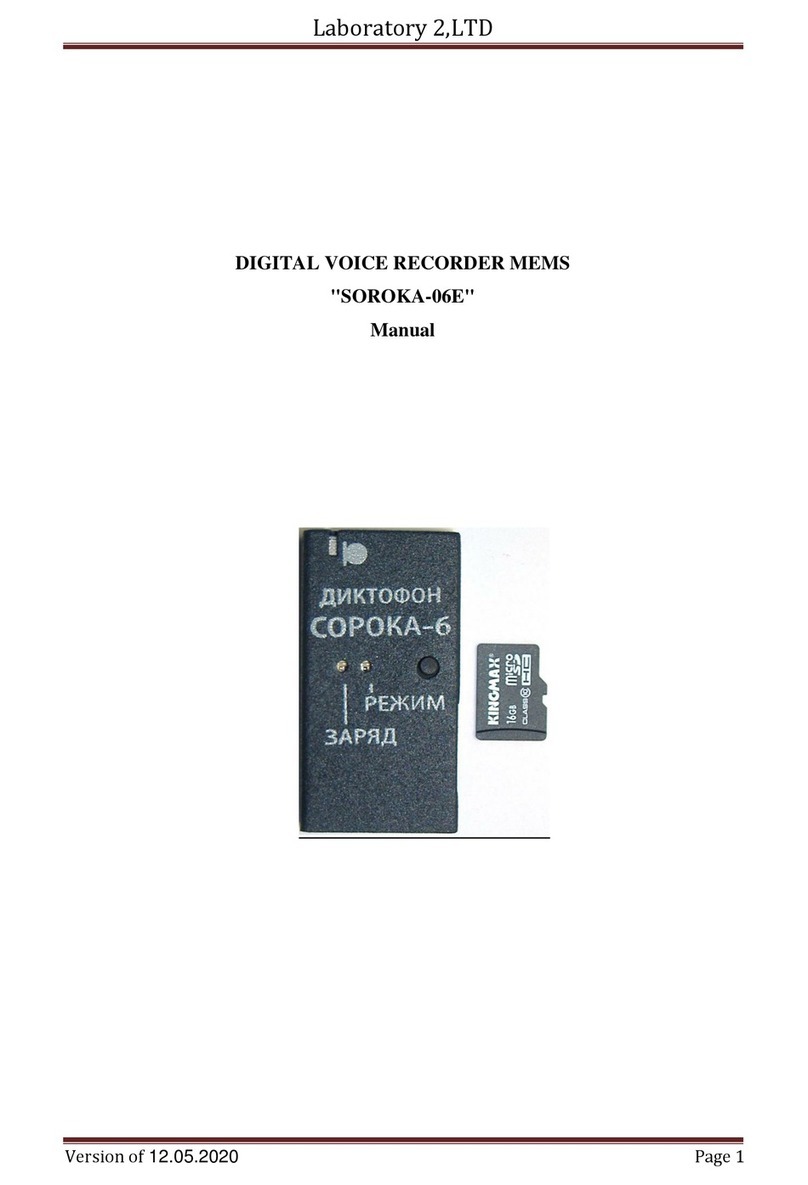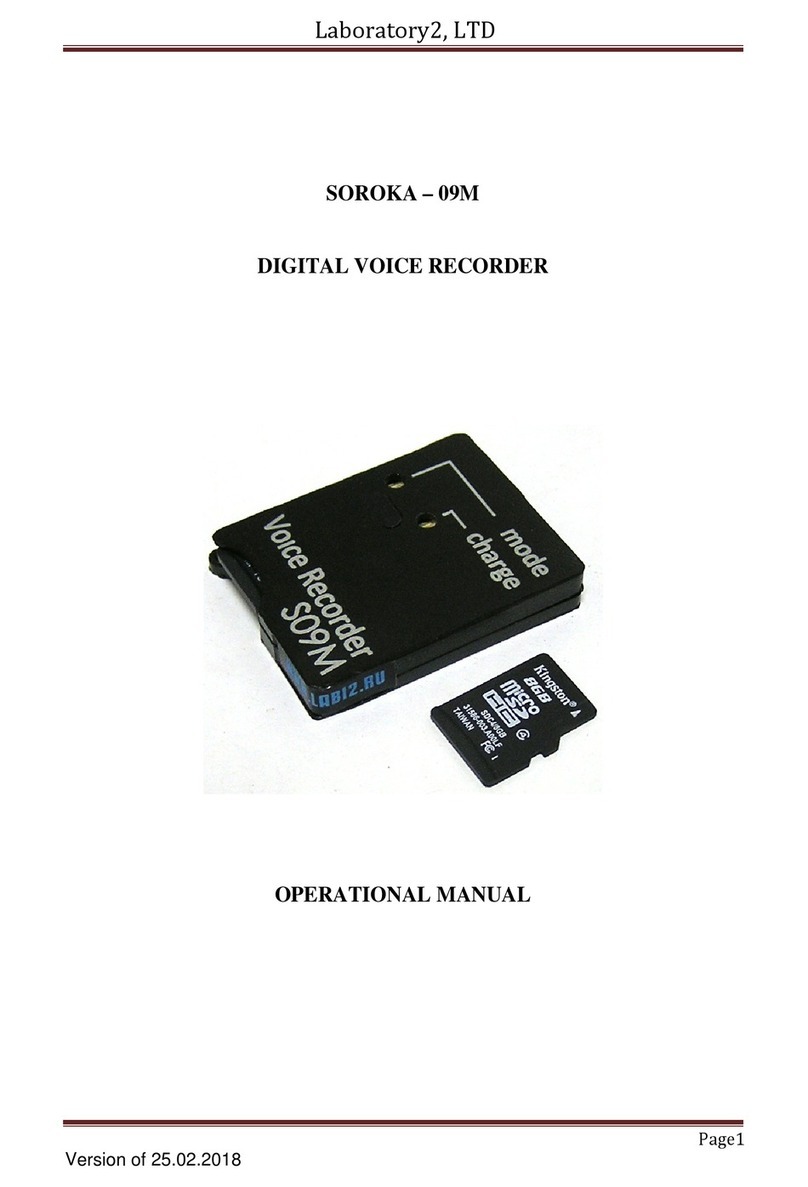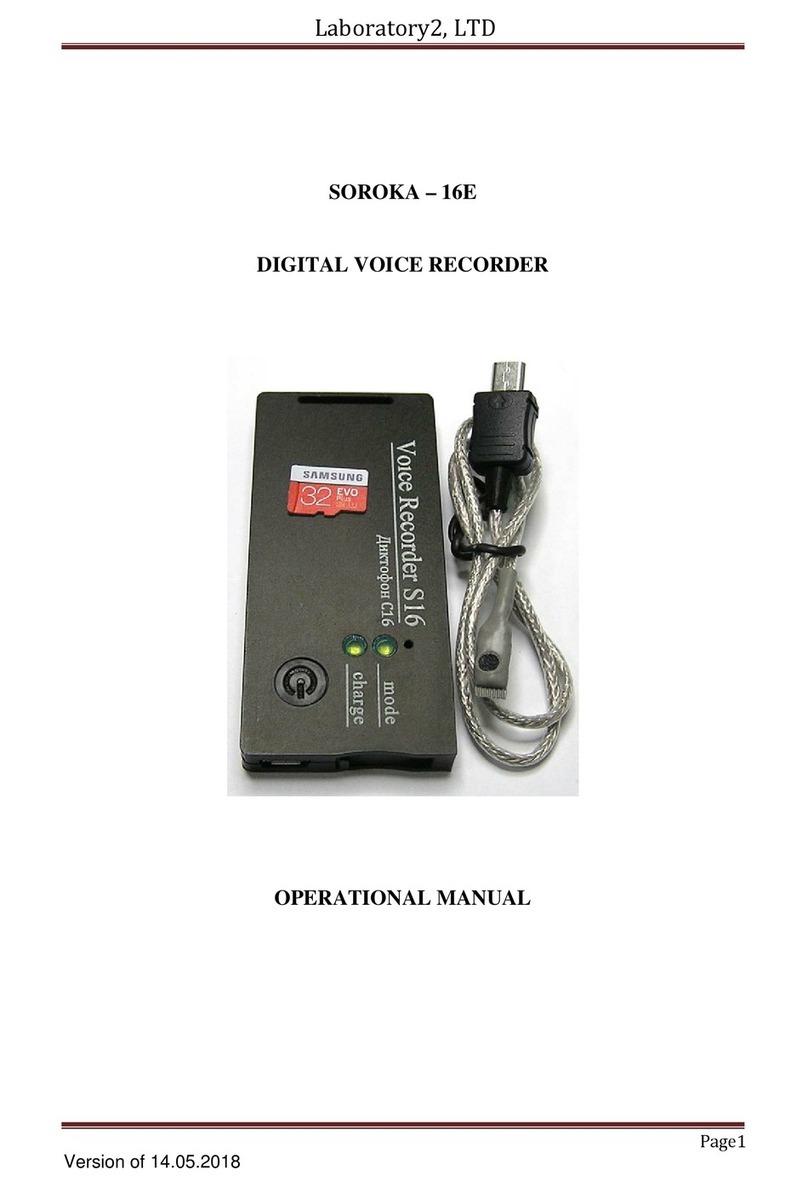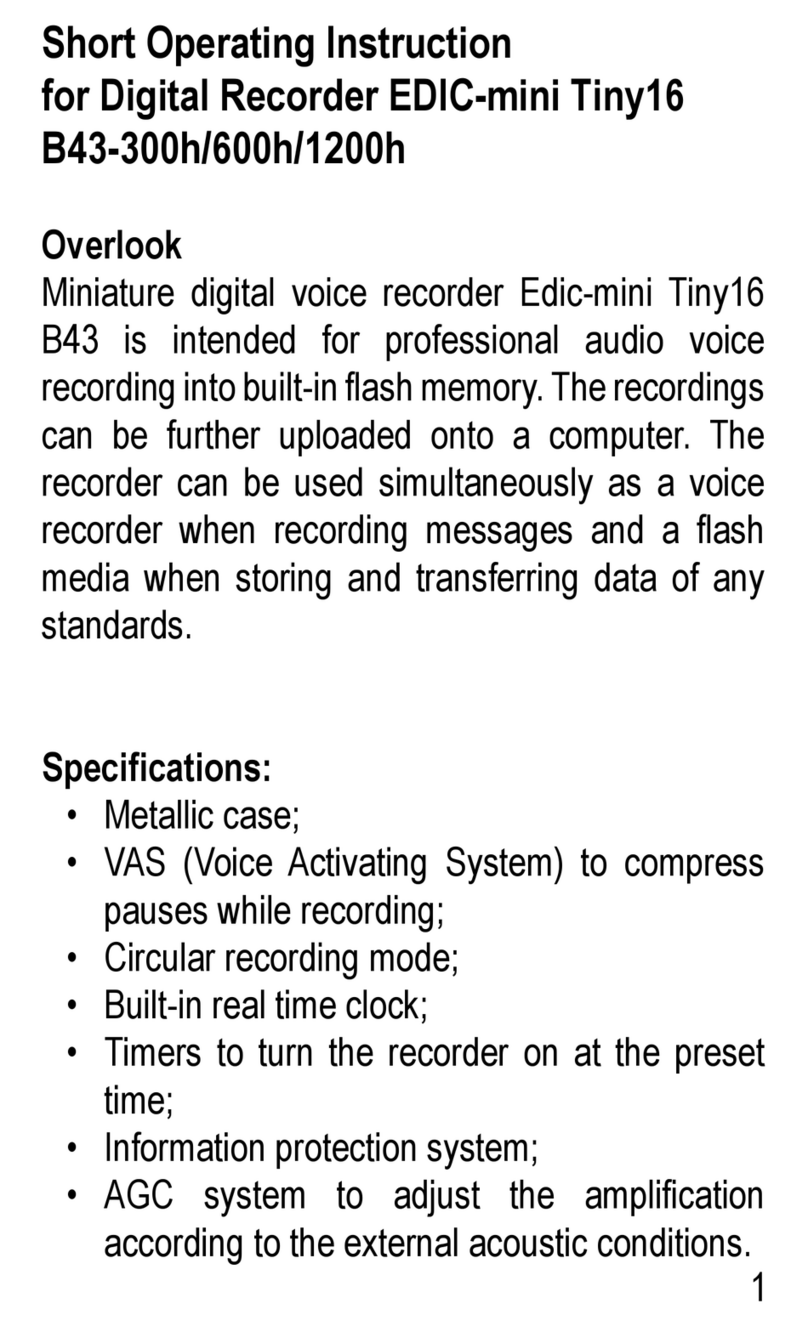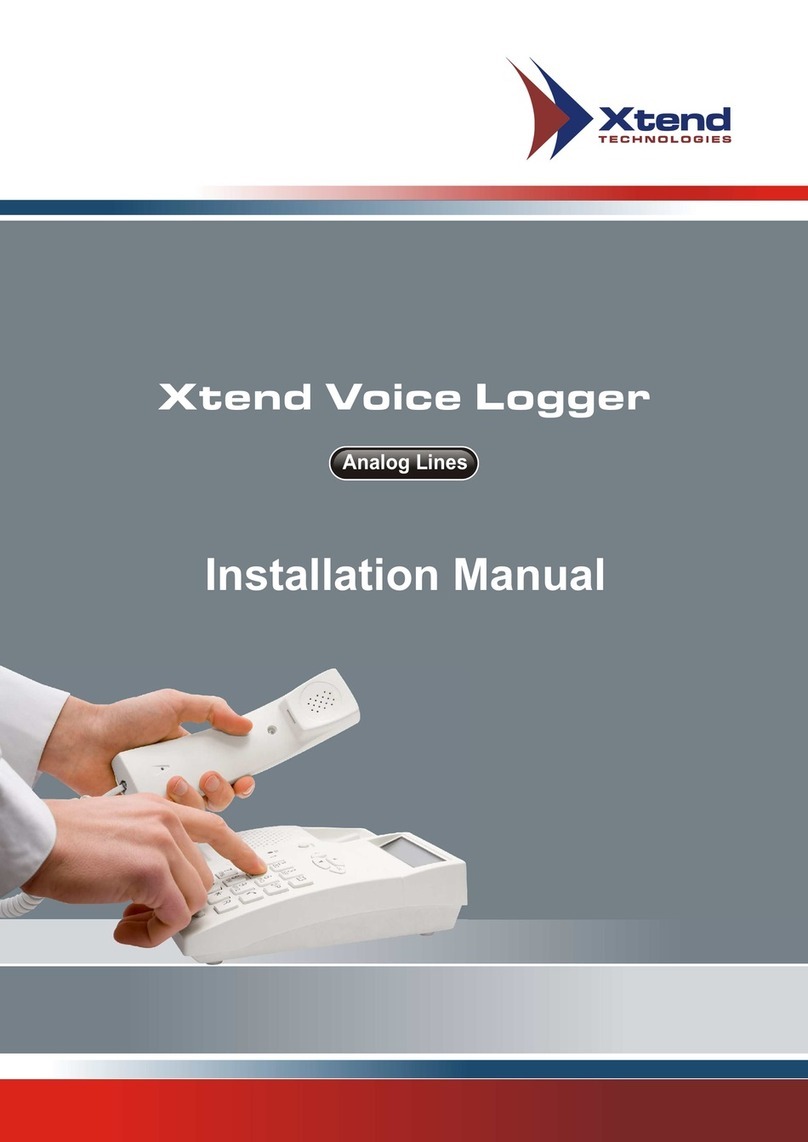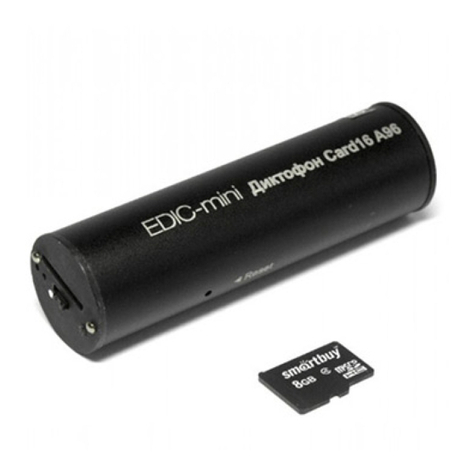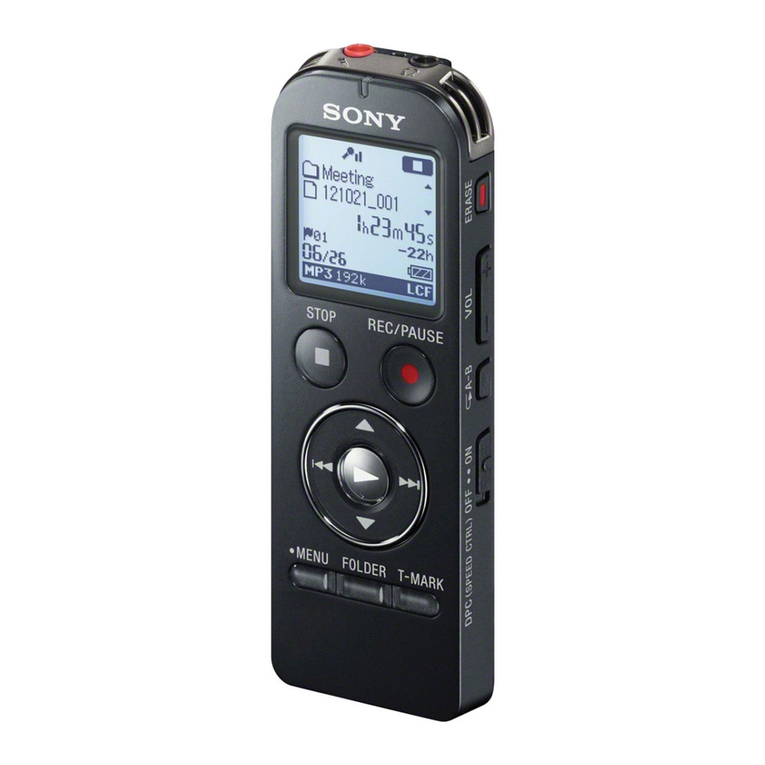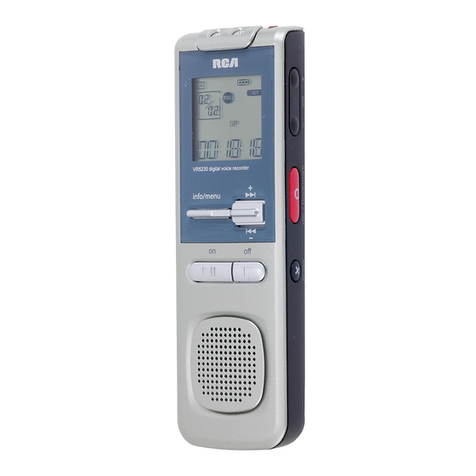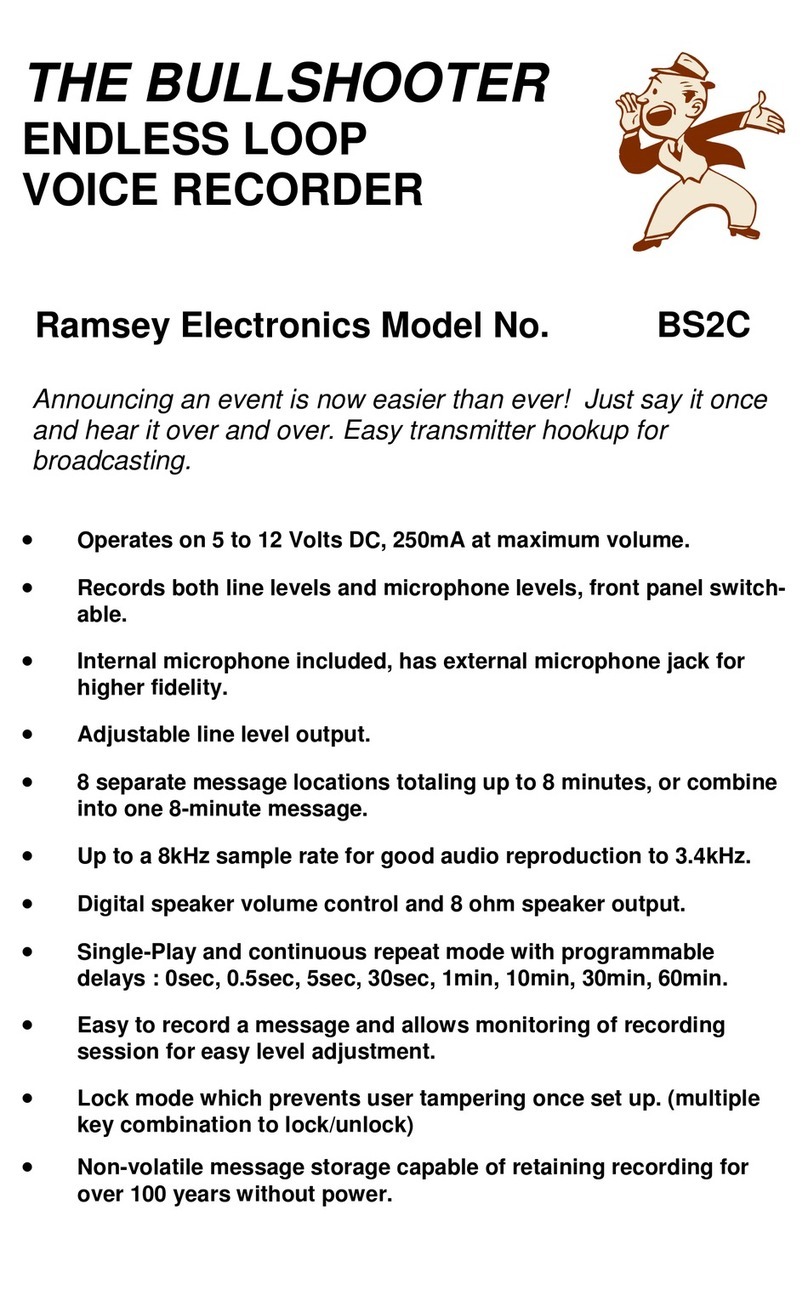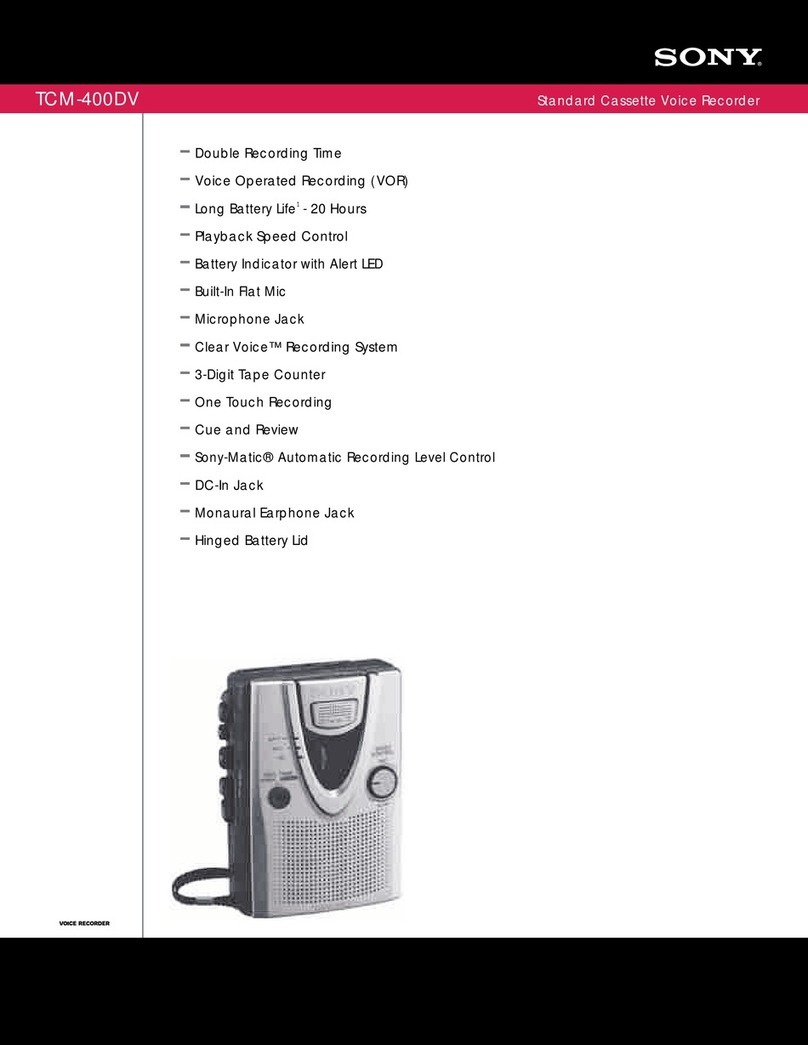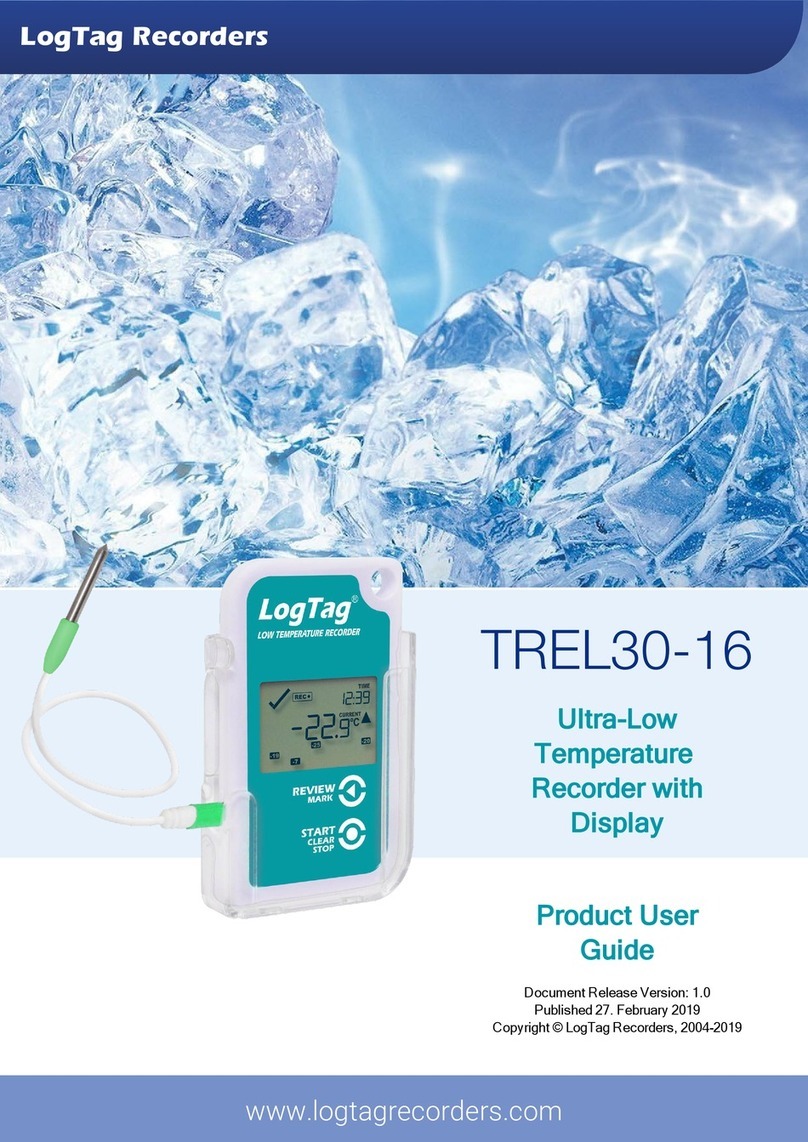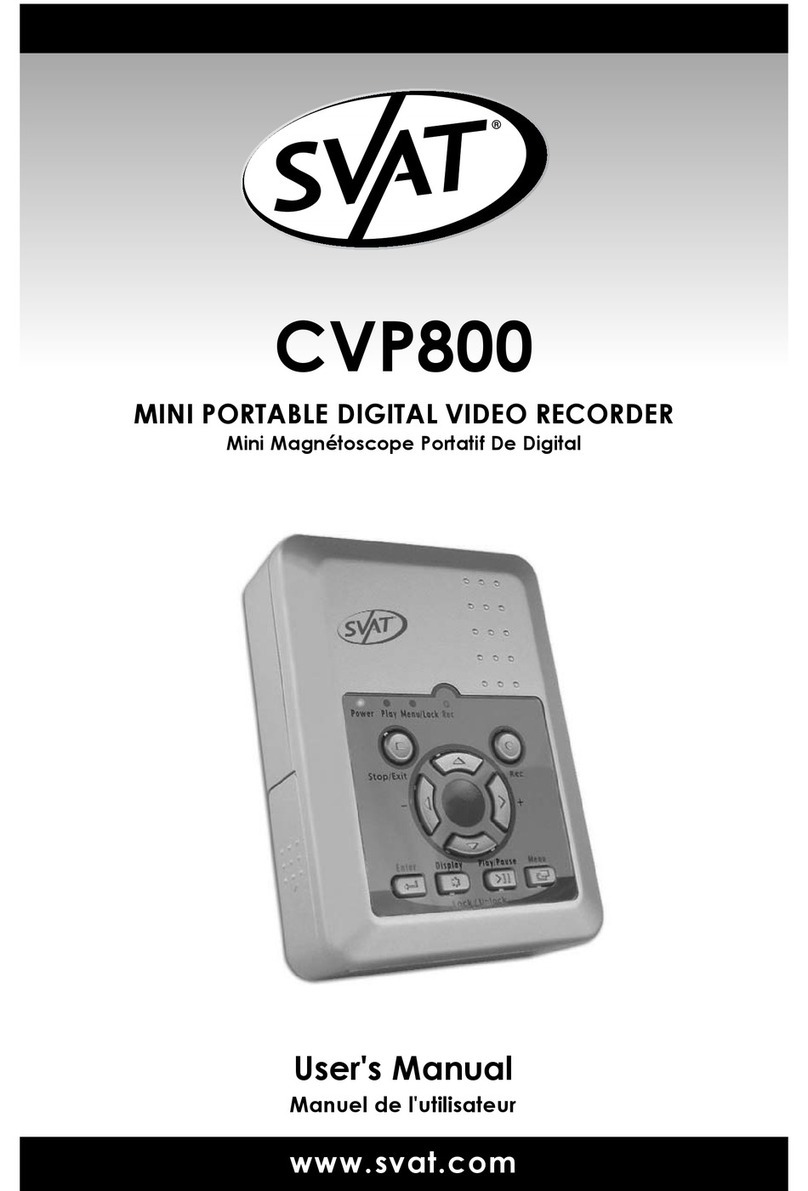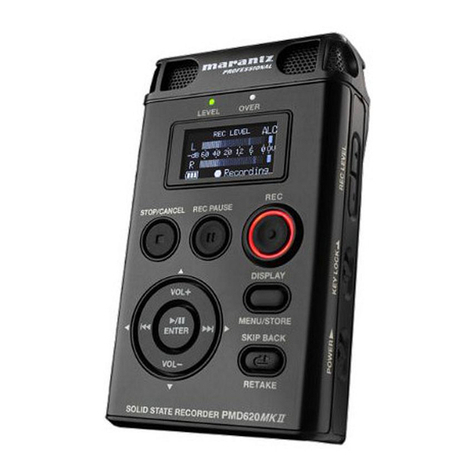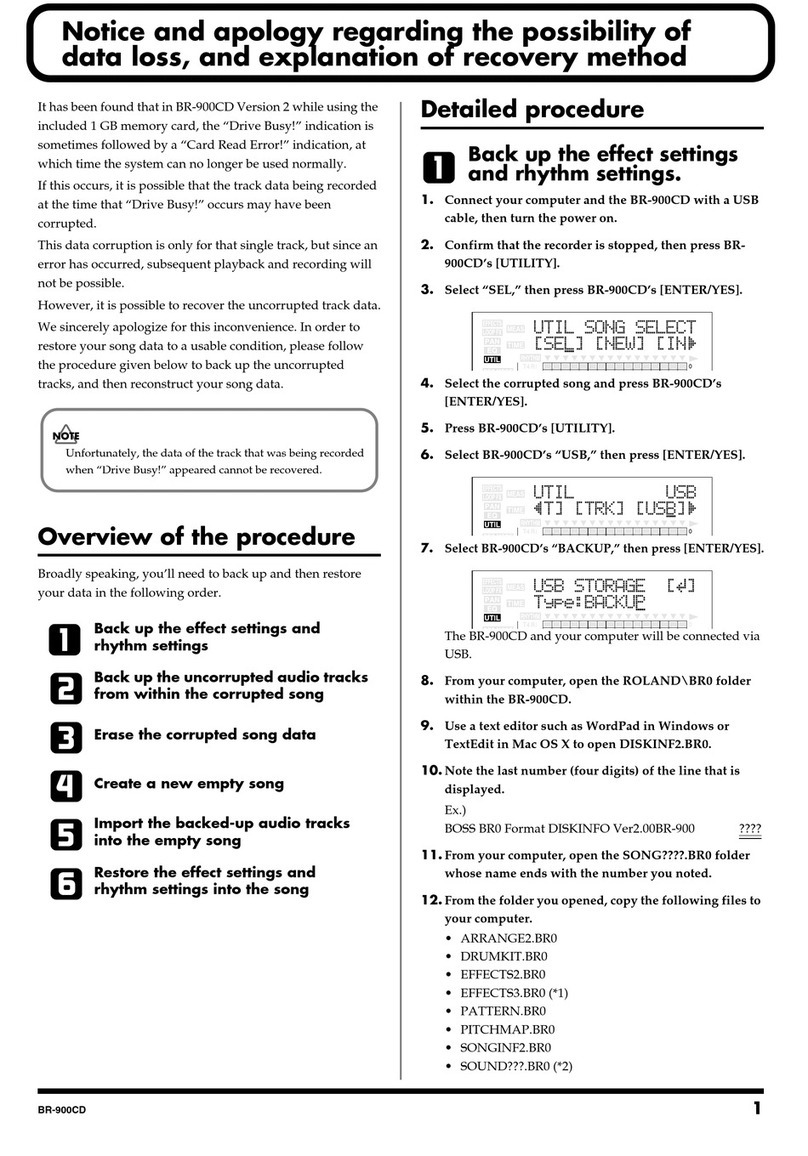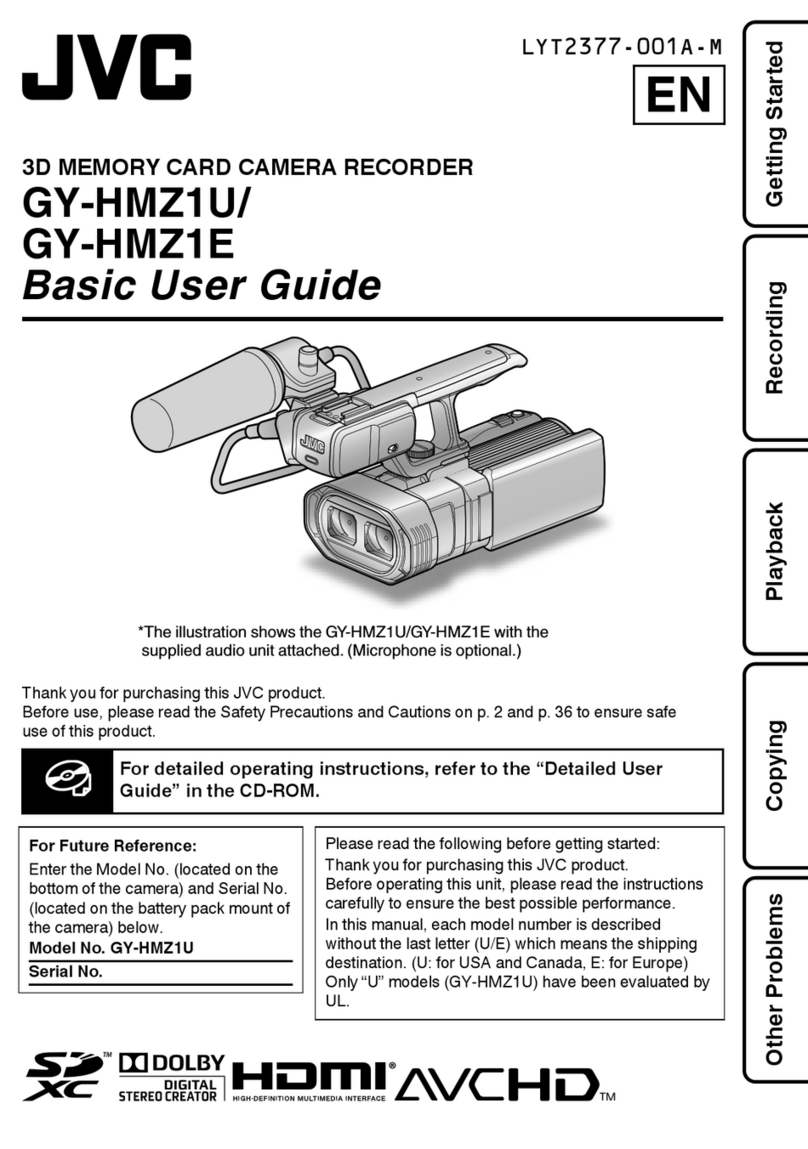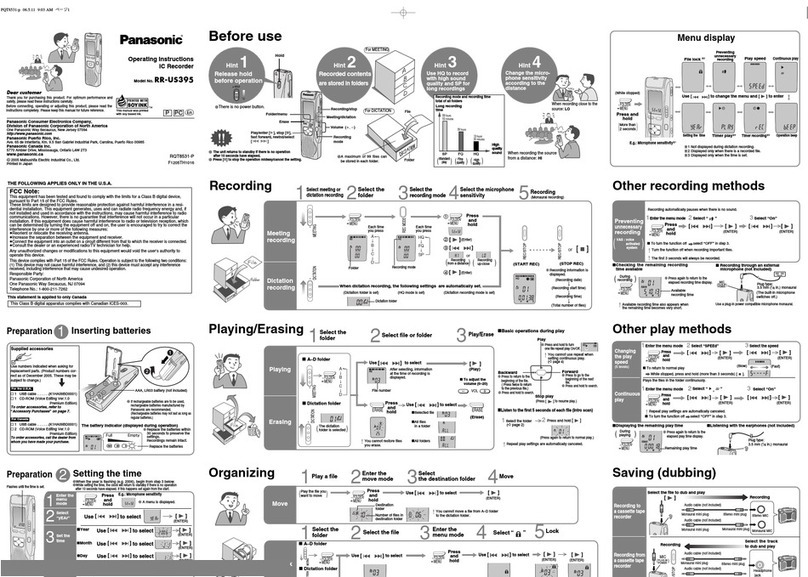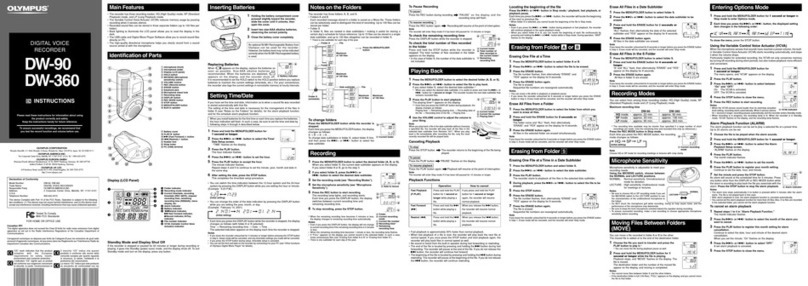1. PRODUCT SPECIFICATION AND DESCRIPTION OF ITS OPERATION 6...........
1.1. Purpose of the voice recorder. 6.....................................................................................................................
1.2. Basic specifications of the voice recorder are listed in Table 2. 6...............................................................
1.3. Light indication of operation modes and battery charging modes. 7.........................................................
1.4. Design and operation of the voice recorder. 9..............................................................................................
2. VOICE RECORDER USAGE 10..............................................................................
2.1. Operating limitations. 10................................................................................................................................
2.2. Preparation of voice recorder for usage. 10..................................................................................................
2.3. Rechargeable battery charging 10.................................................................................................................
2.4. Setting voice recorder parameters. 11...........................................................................................................
2.5. Usage of the voice recorder. 11.......................................................................................................................
2.6. Creating a configuration file. 12....................................................................................................................
2.7. Verification of files digital signatures. 14......................................................................................................
2.8. External microphone connection. 17.............................................................................................................
3. SYSTEM OF VOICE RECORDER LABELS 18.......................................................
4. LOGGER 18.............................................................................................................
5. CURRENT REPAIR OF THE VOICE RECORDER 20.............................................
5.1. General instructions 20...................................................................................................................................
5.2. Typical faults 21..............................................................................................................................................
6. STORAGE AND TRANSPORTATION 22................................................................
6.1. The voice recorder should be kept in its original packaging in heated storage rooms at a
temperature ranging from +5 to +25 ˚C with relative humidity less than 80% (at +20 ˚C). The
environment must be free from pairs of acids, alkalis and other aggressive impurities. 22....................
6.2. The Voice Recorder in special packaging may be transported in closed vehicle (rail cars, containers,
cars, water [sea or river] transport), as well as in sealed cockpits of planes and helicopters. 22............
7. MANUFACTURER'S WARRANTY 22.....................................................................
7.1. The manufacturer guarantees the accordance of the voice recorders to the technical requirements,
providing that the customer observe instructions for operating conditions, transportation and
storage, set up by this manual. 22..................................................................................................................
